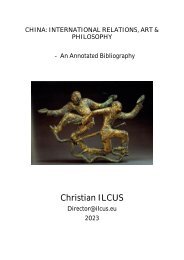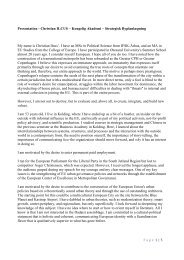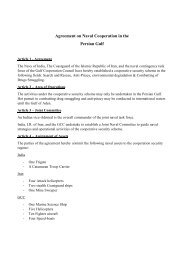diplomacy in antiquity
This is a review piece of books on diplomacy in antiquity begiining with mesopotamia, amarna, the phoenicians, the greeks and romans. The amarna book I found at an exposition at Glyptoteket, CPH.
This is a review piece of books on diplomacy in antiquity begiining with mesopotamia, amarna, the phoenicians, the greeks and romans. The amarna book I found at an exposition at Glyptoteket, CPH.
Create successful ePaper yourself
Turn your PDF publications into a flip-book with our unique Google optimized e-Paper software.
dynasties were sourced mainly from Oman, Bahrain, and even the Indus Valley. Trade between
Mesopotamia and Iran was in stones, metals, timber, and horses in return for foodstuffs, textiles,
and luxury items. This trade played an essential role in state formation in early Mesopotamia. The
Gulf corridor between Mesopotamia and the Sush area in southern Iraq also helped develop a
system of writing to deal with the administration & calculations. Summer even extended her realm
into Iran proper on the premise that it could deliver Sush security against Elamtu highlanders living
in the Zagros mountains. Babylonian ascendency spelled a high civilization and Assyria turbulence
in the Near East system. The contributions the Mesopotamians had made to mankind by then were
already impressive. The writing was invented in Mesopotamia. The Babylonian Hammurabi
undertook the codification of law. It conceived the bi-cameral system combining aristocratic and
popular elements under a chief ruler in Sumer by a fusion of the office of the High Priest and King.
Taxes or tributes were imposed, and a social purpose was first invented in Mesopotamia. A deluge
occurred in ancient times, so man created not only Noah but also Humanity’s first hero.
Mesopotamia is the bosom of the first Moshe, the first legend of resurrection was crafted in
Mesopotamia, and songs of lamentations were put together and proverbs instituted to make sense of
everyday life. These heritages have been diffused to Persia and the West to Greece via Semitic
peoples. The reception, adaptation, and transformation of this heritage as conditioned by material,
social and cultural factors are not only what make us what we are today but also betray the common
heritage of Europe and the Middle East. Thomson (2004) captures the dynamics in terms of a world
system proper that existed in Mesopotamia and takes pain to factor in the political-economic crisis,
climate deterioration, urban population, centralization-decentralization, and center-periphery
relations in explaining the burst and boom of diplomacy among the city-states of the Mesopotamian
plain and the attendant shift be-tween power centers in the south, middle, and north of the
Mesopotamia. In the end, he contends, a pattern of fragmentation of the state system occurred not
2








